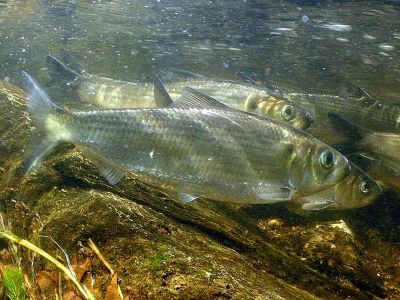The Ipswich River Watershed Association and Massachusetts Division of Marine Fisheries will address dams blocking fish passage and posing flood risks to towns with $2.5 million in funding through NOAA.
NOAA’s Office of Habitat Conservation and its long-time partners the Ipswich River Watershed Association and Massachusetts Division of Marine Fisheries have spent decades trying to restore the Ipswich and Parker River watersheds in the Great Marsh, the state’s most ecologically rich coastal area.
Now, with $2.5 million through the Bipartisan Infrastructure Law and Inflation Reduction Act, the project partners finally have the funding to address problematic dams on both rivers.
The project will:
- Remove the Larkin Mill Dam on the Parker River
- Remove the South Middleton Dam on the Ipswich River
- Complete the design work and permitting for removal of the Ipswich Mills Dam, the first dam on the Ipswich, which currently blocks tidal flow between the river and the ocean
- Build fishways around the Willowdale Dam on the Ipswich River and Howlett Brook Dam on an Ipswich tributary
- Allow migratory fish including river herring, American eels, and other species to reach historic spawning and rearing grounds
- Reduce flood risks to the community and eliminate expensive maintenance costs and public safety liabilities to towns
NOAA staff have been supporting restoration projects in the watershed for more than 25 years. One of the first community-based restoration projects ever implemented by the NOAA Restoration Center involved the remediation of an undersized culvert blocking tidal water in Ipswich.
The Parker and Ipswich Rivers once supported some of the most productive migratory fish runs in Massachusetts. However, the population of river herring dropped dramatically in the Parker River and has been virtually eliminated in the Ipswich River largely due to dams.
With dams blocking fish passage on many other New England rivers, the overall loss of biomass flowing into the ocean is tremendous. Elsewhere in the region, researchers have connected the decrease in river herring to the collapse of inshore fisheries like cod.
Scientists note that dam removals will also improve water quality by decreasing temperatures, increasing oxygenation, and allowing nutrients and sediment to flow into the Great Marsh.
Designated as an Area of Critical Environmental Concern, the Great Marsh is the largest continuous salt marsh in New England. It receives special recognition because of its importance for fisheries, bird habitat, and tourism.
“Currently, high tides come up the mouth of the Ipswich River and hit the Ipswich Mills Dam,” says Brian Kelder, NOAA Marine Habitat Restoration Specialist. “By removing the dam, we’re giving room for the tidal exchange to migrate up the river which is important from a habitat standpoint. Species like rainbow smelt spawn right at that tidal interface.” Eliminating the Ipswich Mills Dam will restore 1.5 miles of tidal freshwater habitat.
This year the team finished building a fishway around the Howlett Brook Dam which will allow river herring to reach historic spawning ponds. The partners plan to remove the South Middleton and Larkin Mill Dams in 2024 and 2025, while designing and permitting the removal of the Ipswich Mills Dam.
NOAA also awarded the Ipswich River Watershed Association and the Parker-Ipswich-Essex Rivers Restoration Partnership an additional $1.4 million to remove tidal barriers at road crossings in the Great Marsh. Work on that project will begin next year.
source: NOAA Fisheries
